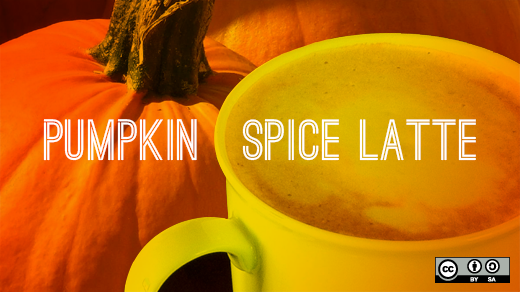Coffee, often cited as the second most highly traded commodity in the world, is deeply personal for many. Every coffee drinker has their favorite brand, blend, and brew method. Years ago I considered myself a coffee fan, but the coffee I was drinking was so loaded with cream and sugar that it barely resembled the beverage. I purposefully weened myself off of the additives and learned the unfortunate truth that most coffee served in the United States has gone stale before the consumer reaches for their wallet. After a long search for the freshest cup, I decided to roast my own.
As I started to learn more about the beverage, I noticed two things. First, the people involved in the craft are very eager to talk shop with others willing to learn. Mention that you're a home roaster in a small coffee shop and be ready to spend the next half hour debating if espresso roasts should be still be taken to "second crack." Second, most of the coffee products are closed source and closed access. Look at your coffee label and see if it says the country of origin for the beans, the roast level, or sometimes if it even includes 100% Arabica beans. Chances are you are not permitted to know much beyond marketing material, and certainly not blend percentages and roast levels.
Why does openness matter? I guess to the average consumer it doesn't. If it tastes good, why question if that fancy Kona blend has any more than the minimum 10% Hawaiian coffee needed to carry the label? Of course we know better. Openness and transparency, especially in our food, are not just philosophical ideals.
For my coffee, open source is the default choice. And for my seasonal hot drink, it's the pumpkin spice latte. Marketed by Starbucks as the defining autumn drink, I challenged myself to not only replace their version, but to produce an open source alternative that tastes even better. There are plenty of pumpkin spice syrup recipes on the Internet (read a dozen and you'll see they're all copies of the same source), but there are no open source recipes for espresso crafted for this particular drink.
Since coffee should be the center of the experience and pumpkin should be a highlight, I doubled the amount of pumpkin purée in the syrup and used a selection of coffees to pick up the spice notes. I started with a dry processed Brazilian peaberry I roasted to a level called "full city plus." This is far lighter than what Starbucks roasts, but could be compared to a medium-well done steak. Since peaberries (tiny and round) are more delicate than regular beans (having one flat side), I roasted them separately. Sampling this on its own, most people taste rich nutty flavors without any charred notes caused by over-roasting.
My second roast was lighter, called "city plus," allowing for the unique flavors of the origins to shine. I chose equal parts of Colombian, Sumatran, and Yemeni coffee which added sweet apple cider flavors, thick syrupy texture, and clove-like tartness respectively. I took the two roasts and blended them in equal amounts. Pulling an espresso shot resulted in a very smooth autumn flavored espresso with a spicy finish.
To make the latte, mix a double shot of espresso with a tablespoon of pumpkin spice syrup and slowly pour six ounces of mostly steamed and partially foamed milk. The foam technically makes this somewhere between a latte and a cappuccino, and removes the need to add whipped cream. The small amount of milk lets the espresso flavors show, and the syrup adds just enough sugar to satisfy the sweet tooth without turning the beverage into a heavy dessert.
Crafting the perfect blend can be expensive with all the trial and error needed. It also takes a lot of time. I've spent a solid six months experimenting with dozens of origins, spent countless hours talking with baristas and professional roasters in a few cities kind enough to spill some secrets, as well as collaborated with two home roasters in Raleigh. I understand why retail chains want to keep their source code proprietary, but at the same time, How much further could the industry go if knowledge was shared throughout a community of enthusiasts?
I still feel like I'm at the very beginning of a long journey, but the experience of sharing truly open, homemade coffee with close friends, family, and coworkers is worth all the effort.
Have you ever roasted open source coffee? I'd love to hear about your experiences. Also, if you try the pumpkin spice latte recipe, let me know your feedback.
Espresso Roast
- 8oz dry processed Brazilian peaberry—roasted to a bean temperature of 435 °F to 445 °F (full city plus)
- 8oz blend of Colombian, Sumatran, Yemeni—roasted to a bean temperature of 425 °F to 435 °F (city plus)
After roasting, combine the two batches into a mason jar and place the lid loosely on the top. Do not seal the jar. Allow coffee to rest for 8 to 12 hours after roasting. After the initial resting phase, close the lid completely. Serve coffee two to three days after roasting and finish within one to two weeks.
Pumpkin Spice Syrup
In a medium saucepan, dissolve 1½ cups sugar in 1½ cups water. Add the following ingredients to the mixture:
- 6 tbsp. pumpkin puree
- 4 cinnamon sticks
- 1 tsp. ground nutmeg
- ½ tsp. fresh ground ginger
- ½ tsp. ground cloves
Heat for about 5 to 10 minutes but do not let it boil. Remove from the heat and allow to cool. Strain the mixture through a cheesecloth (or a French Press, as I did). Store the syrup in the refrigerator.
Pumpkin Spice Latte
- 2 fl oz of espresso (made with 18.5g fine ground coffee)
- 1 Tbs pumpkin spice syrup
- 6 oz of 2% or whole milk, steamed and partially foamed
Serve immediately and enjoy thoroughly!




2 Comments